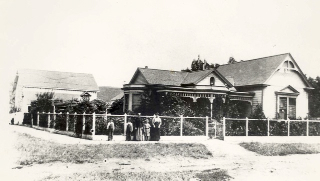The famous building, where longtime Postmaster R. “Guy” Smith reigned, remains standing on the east side of Highway 1 in Moss Beach.
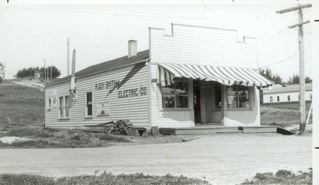

Created by June Morrall
The famous building, where longtime Postmaster R. “Guy” Smith reigned, remains standing on the east side of Highway 1 in Moss Beach.

Story from John Vonderlin
Email John ([email protected])
Hi June,
As I mentioned previously, at the Coast Survey’s Historical Map website, if you Search using Half Moon Bay as the Keyword, you get thirteen hits. The bottom one on the list is a Preliminary Bathymetric Map withoout a date of origin. On examination it turns out to be a 1961 map, though it was updated aerially twice later. I’ve grabbed a few ScreenShots from the map that interested me and attached them.
I have an idea there has been a few changes to HMB in the fifty years since the info for the map was gathered. A few oldtimers may find it a fair representation of the “Good Old Days,” they remember from their youth. Enjoy. John
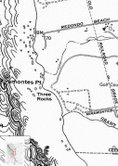
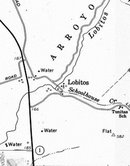
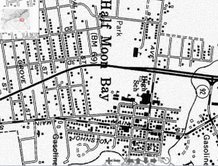
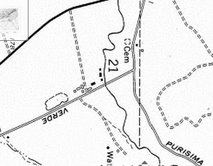
Story from John Vonderlin
Email John ([email protected])
Hi June,
Here’s an extract from the 1888 San Diego to San Francisco map at the Coast Survey website. It shows Spanishtown, something I don’t think I’ve seen on a map before. Enjoy. John
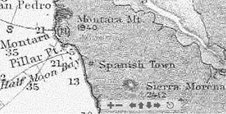
From “The History of San Mateo” by Roy Cloud, 1928
[This is an incomplete article.]
Alvin S. Hatch
“One of the leading commercial enterprises at Half Moon Bay is the lumber business conducted by Alvin S. Hatch, who has prospered, due to his progressive methods and keen judgement in practical matters. Mr. Hatch was born in San Mateo county on the 4th of June, 1876, and is a son of Rufus H. and Maria J. (Schuyler…ed. there was the famous Schuyler Hotel in Half Moon Bay), who were married in March, 1875. The father was born, reared and educated in Vermont, where he lived until 1853, when he came to California, residing in San Francisco awhile. In 1854 he came to Half Moon Bay, his arrival being prior to the organization of San Mateo County and here he engaged in farming for a time but later turned his attention to the lumber business. In 1864 he took up a tract of government land and, in partnership with G.R. Borden, bought a large tract of timber land. They built and operated a water-power sawmill, which they converted into a steam power mill in 1871, theirs being the first sawmill in this part of the county.
“Maria J. Schuyler was born in Georgia in 1850, and in 1870 arrived in California, to which state her father had come some years previously. He served as a butcher on steamers plying between Panama and San Francisco, but later came to Half Moon Bay and from 1870 conducted the Schuyler Hotel.
“To Mr. and Mrs. Hatch were born four children, of whom two are living, Alvin S. and Edna, who became the wife of Dr. J. C. McGovern. Both parents are deceased, the mother dying in 1888 and the father in 1906.
“Alvin S. Hatch received his education in the public schools and early became familiar with the lumber business, with which he has been identified during practically all his life. He now owns and operates a large yard at Half Moon Bay, where he carries a complete line of lumber…..”
Story & Photos/Video by Deb Wong
Email Deb ([email protected])
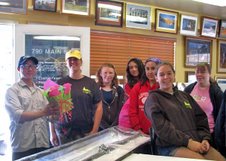
The kids and their counselors from Camp Butano Creek visited our gallery today, to start off their field trip. They are practicing photography at the camp, so they got to ask Michael a lot of questions about how to shoot photos. While they were here, I took a few photos & some video (I am trying to practice my video skills, which can use some help). There were 3 adult volunteers to take the girls around. So, o.k., I know that we weren’t the most exciting stop in their field trip, as they were on their way to the Santa Cruz boardwalk! At least maybe they learned something, & got to look around. Before they left, they presented us with some Girl Scout cookies as a “thank you”.
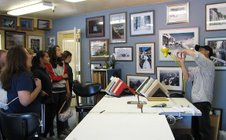
Here is a link to a video of Michael talking about one of his photos:
[vimeo]http://vimeo.com/5599923[/vimeo]
Story by John Vonderlin
Email John ([email protected])
Part 1 The Widow Wood Mystery
Hi June,
This posting is about my observations of the second of the old maps of the Coastside from the Coast Survey website. This map, compiled in 1863, published for the price of 30 cents in 1864, is of the Half Moon Bay area. Note that this document has both the modern name and spelling for HMB. To have easy, online access to such an old, but meticulously prepared map of the Coastside is a real treat for me. Although, it has created a number of questions and a couple of mysteries in my mind. I’d like to share some of those.
[Images: Complete Map and Legend ScreenShots]
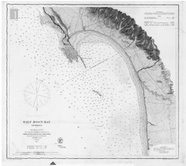
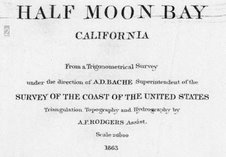
As I magnified the map to examine it, my eyes were immediately drawn to and along the diagonal black slash in the offshore waters. “Widow Wood’s House and Bald Pate in Range” is what it reads along the dot-and-dashed line. Following it to the northeast as it goes ashore, you see Widow Wood’s home is marked and the line ends at the top of a small hill, probably the “Bald Pate.”
The questions for me were then: Who was she? Where exactly, if it existed today, would Widow Wood’s house be? Is it still there in some form or name? Lastly, why was her dwelling selected to be immortalized in a Coast Survey Map nearly one hundred fifty years ago?
[Images: Diagonal Line and Close-up of Widow Wood’s]
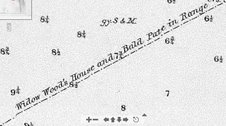
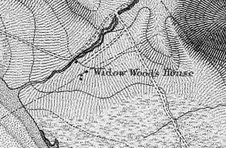
The last one I assume has to do with the triangulation they were doing. Some point of reckoning lined up with the Widow’s house and the top of the hill. I’m not sure of the significance, but it should be easy to find out.
By comparing Google Earth and the Survey Map I’ve pinpointed the house’s location in Miramar, just south of Medio Creek. As you can see in this overlaid ScreenShot it looks like the house was about in the middle of where Highway 1 is these days. Right where Google Earth has their Miramar marker.
Image: Overlay of Google Earth and Coast Survey Map]
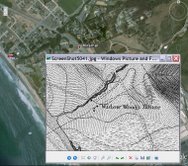
When at the Coast Survey website if you use “Half Moon Bay” as a Search term thirteen maps come up for viewing or downloading. They range from this 1863 map to one from 1990. The nice thing is they are all of the same area, so you can compare them easily. Here’s a ScreenShot from the 1947 version.
[Image: Excerpt from 1947 Map]
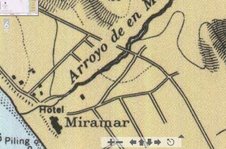
That’s about all I have on Widow Wood at this time. But, there are several other features of interest I’d like to point out on the map in other postings. Enjoy. John
Part II: Whaleman’s Harbor : To read this story, please click here
New Story by Michaele (Mikie) Benedict
Email Mikie ([email protected])
A Terrifying Sea Tale
By Michaele Benedict
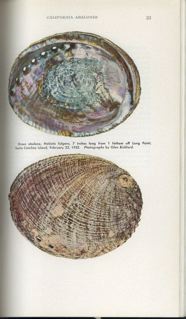
The abalone diver probably has forgotten all about the time Edward almost killed him, since he hasn’t gone after abalone for years—nobody has—and worse things surely happened to him in the years he was prowling the Pacific floor for the delicious mollusks.
Jack (I’m changing the names, though anyone who knows these two will immediately recognize them) lived next door to us in the canyon. He was a romantic figure, tall, smiling and confident, the son and brother of fishermen. He ran the Abalone Shop in Princeton, assisted by his beautiful wife and by sundry neighbors.
At the shop, they cleaned and pounded abalone and sold it, along with fish, sea urchins, and whatever was running. Now that abalone are rare on the California coast and no diving is allowed south of Mendocino, it seems surprising that there were so many of them in the early 1970s. Next to Jack’s house was a virtual mountain of abalone shells, strikingly fragrant on warm days.
Jack dived in one of those spaceman outfits you see in old ocean movies. Underneath it he wore a ragged union suit which we were convinced must have belonged to his father. He needed a tender, and he took Edward out in the boat with him one day to show him what a tender did.
Full of enthusiasm for the job, Edward got a tender’s license and went out with Jack, probably composing fish stories in his mind. But very soon after Jack’s helmet disappeared under the water, the boat began lazily rotating and Edward saw that the lifeline had become wrapped around the engine.
As he was trying to free the lifeline, he heard a muted voice coming through the air hose, saying “Get me out of here!” With a snarled lifeline, the only way to get Jack—weighing a couple hundred pounds in his diving suit—out of the water was to haul him in by his air hose, which of course cut off his air supply. The two of them had a tense trip back to the harbor. Edward, not noticing the motion of the boat while he was trying to untangle the lifeline, had dragged Jack off the reef. Jack had cut his weights, abandoned his catch, and surfaced twenty feet or more from the boat.
Edward arrived home pale as a ghost. When finally he could speak, he said “I almost killed Jack.”
The next day, he tried to get his money back for the tender’s license, since he was resolved never to go to sea again. I don’t remember how much money it was, but it was several hundred dollars, and his career as a tender had only lasted a day.
Jerry Brown was attorney general in those days, and Edward had known him slightly when they both lived in the same apartment house. Edward wrote him and asked to help get the money back for the tender’s license, and actually Jerry did just that, saying that fair was fair.
Jack donated the mountain of abalone shells to the KQED auction, and they brought a good price.
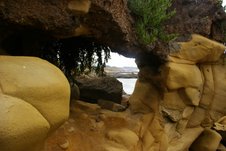
To read John Vonderlin’s story: “Peacock Rock and Ice Plant Arch,” please click here
To Whom It May Concern
As I have sold my interests in the Montara Garage to Wm Armstrong and Frank Smith, I will not be responsible for any bills contracted by them on or after the date of February 17, 1923.
J. W. Tremel
============================
To Whom It May Concern
As the undersigned, and Wm L. Armstrong have purchased the J.W. Tremel interests in the Montara Garage, we will not be responsible for bills contracted by him in the name of the Montara Garage on or after February 17, 1923.
Frank Smith
==========================
